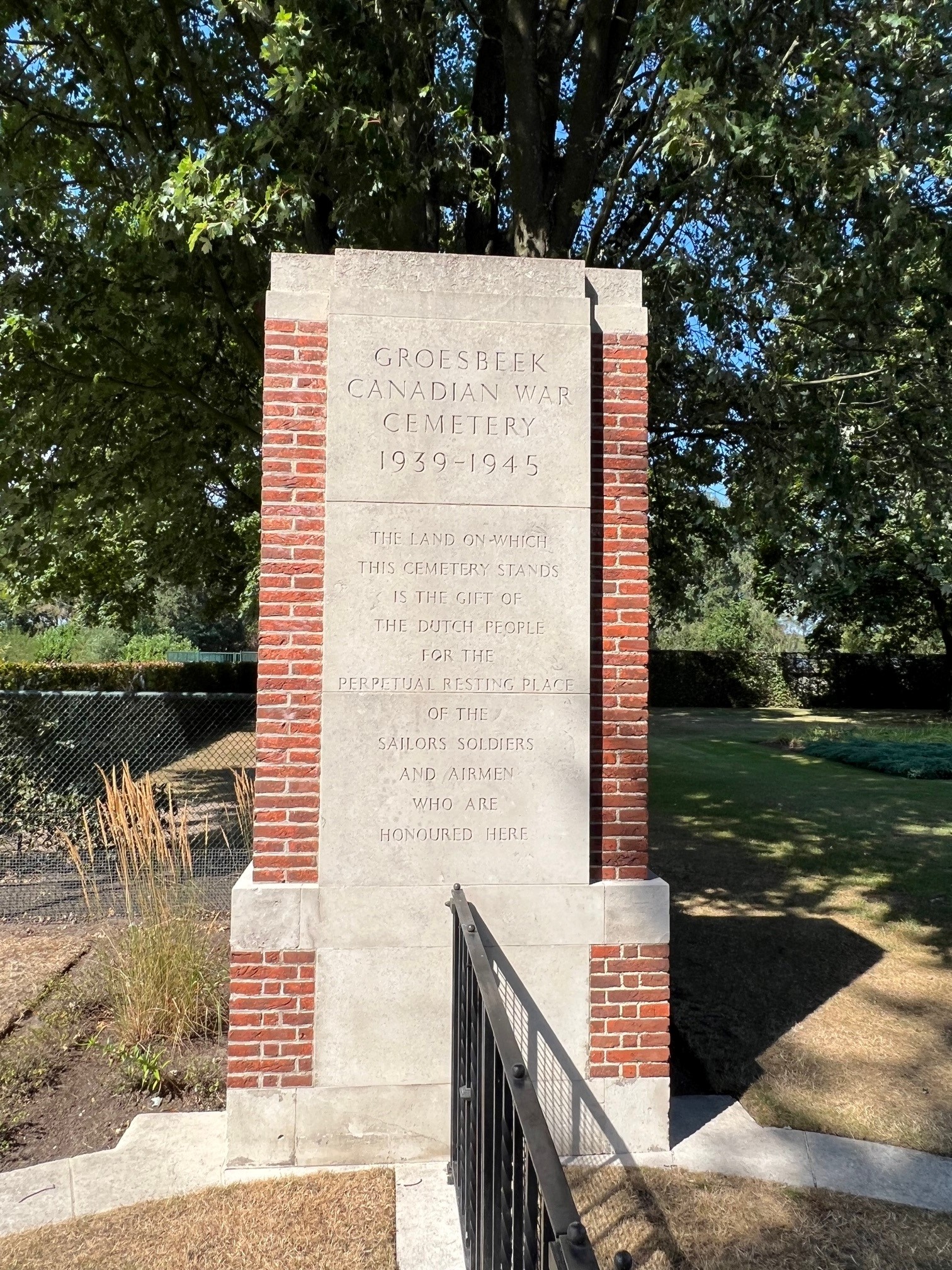Having returned from Arnhem I felt I would like to add some more information of what I discovered while on the ground. The battlefield and it’s surrounding area has changed from those bitter days in September 1944. Modern urban town and villages, lush forests, tended fields and open heathland. There is so much to discover that it takes you back time and time again. I look to post a couple more blog pages over the coming days.
Major John Frederick Bernard Blatch was once a Head Boy at my School Durlston Court. He joined the Territorial Buckinghamshire Battalion in August 1939 and served with them in France and Belgium in 1940. He was wounded during the withdrawal to Dunkirk and after evacuation re-joined his battalion in July 1940 as regimental Signals Officer. In February 1942 he transferred to the Glider Pilot Regiment with the Oxs and Bucks. In September 1944 was Second in Command of its Number 2 Wing. He was awarded the Distinguished Flying Cross after Market Garden and his citation read as follows:-

“Major Blatch took off on 17th September 1944 from Broadwell, but owing to very bad weather was compelled to land in England, this he succeeded in doing safely; the next day he again took off in his glider and over Holland the tug aircraft was hit by flak and Major Blatch’s glider had the whole of one aileron shot away, thereby causing him to force land, this he succeeded in doing successfully just inside the British lines near the Albert Canal. Major Blatch then succeeded in contacting HQ Airborne Forces at Nijmegen and made determined efforts to re-join the Wing in the Arnhem area; but failed to do so. Had it not been for his flying skill, it is certain that the load he was carrying in his glider, which included senior officers, would have suffered serious injury.”
John, or Frank as he was known by had a brother, Capt. Stuart Leslie Blatch. He was commissioned into the Royal Armoured Corps and volunteered for the airborne forces. Captain Blatch successfully completed his glider training and was posted to 1st Airborne Division Signals, Royal Corps of Signals, attached H.Q. 1st Airlanding Brigade, and took part in Operation Market Garden, Arnhem. So while his brother Frank was trying to get to Arnhem twice, his brother Stuart was on the ground within the battlefield.

Capt. Stuart Blatch was a Royal Signals officer and on the 20th September 1944 he was to visit the OP meeting at the Brigade Head Quarters (Bde HQ) This was located in a wood between Sandersweg and Pietersbergeweg. The site is now occupied by the company Lensen Hoveniers. The Bde HQ was mostly underground as it was being constantly mortared by the Germans. At 08:30 hrs on the 20th a mortar bomb landed on a conference and killed the Staff Captain (Capt Moy Thomas), the Brigade I.O. (Capt Burns) , Signals Officer (Stuart Blatch) and the Def PL Comd (Lieut Thomas). Four senior officers all killed at the same time. Capital Stuart Blatch has no known grave.


I would like to thank Luuk Buist who is by far the best Arnhem historian, especially Glider Pilot history for providing text from a 23rd December 1944 publication called Arnhem: 2 Inside the Perimeter. This gives a eyewitness account of what happened at Bde HQ.

For all commonwealth soldiers with no known grave after the Allies crossed the Seine up until the end of the war are remembered on a Memorial at the Canadian War Cemetery in Groesbeek. I then travelled to this cemetery to pay respects to Capt. Blatch. I had been asked by Stephen Petty, who is my history mentor, to lay a poppy, light a candle and write some words on his behalf. I was honoured to do so. ( I would have laid a wreath, but unlike Ypres, you cannot buy one locally)



Mr Petty who interviewed many Arnhem vets in the early 2000s including Frank Blatch was told that Frank’s fellow constant companion who was flying in Border Regt mortars witnessed the building hit by the Germans which killed Frank’s brother Stuart.


Another fascinating story, Callum. Thank you for sharing your research.